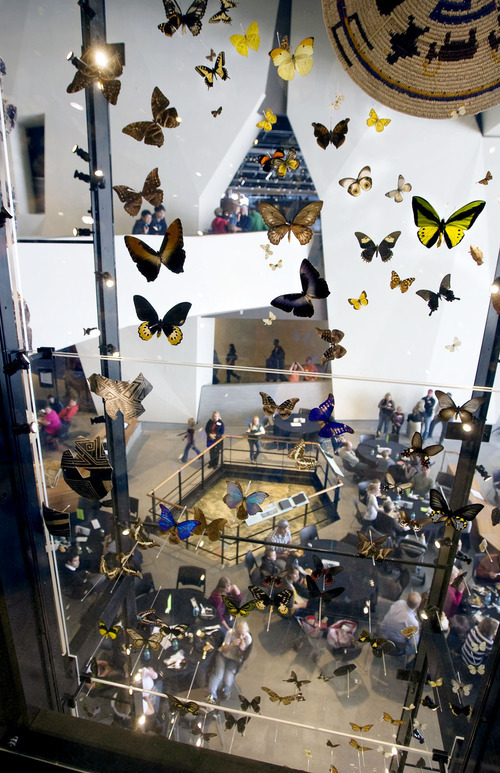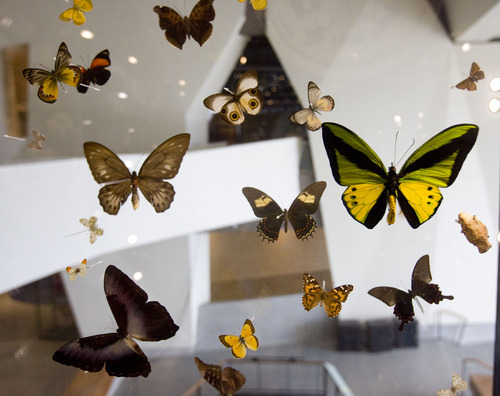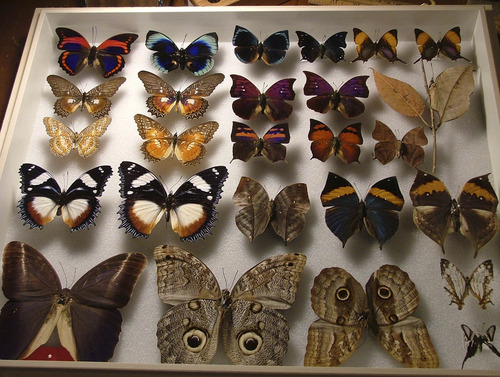This is an archived article that was published on sltrib.com in 2012, and information in the article may be outdated. It is provided only for personal research purposes and may not be reprinted.
Sixty years ago, James Pearce spent his boyhood summers in Mill Creek Canyon with a gossamer net in search of large-winged insects.
His obsessive quest for butterflies cultivated an interest in science and propelled him to a career in medicine. Eventually, specimens filled a room in his Salt Lake City home.
The late physician's 16,000-specimen, museum-caliber collection is definitely pretty to look at, but it also is a boon to science now owned by the University of Utah, where Pearce had been on the clinical faculty before his death in 2009.
The Pearce family has donated the butterflies to the Natural History Museum of Utah, where the collection will be on display May 9 for one night only.
The museum previously incorporated many Pearce specimens into its massive Collections Wall exhibit at its new home at the Rio Tinto Center.
"The legacy of his collection is already splashed two stories tall," said entomologist Christy Bills, who manages the museum's invertebrate collections.
When he was terminally ill, Pearce decided his collection would end up in a museum where it could be appreciated by the public and studied by scientists, according to his widow, Virginia.
Seeing the butterflies on permanent display in the Collections Wall, where they cut a sinuous line among dozens of floating artifacts, has been gratifying, she said.
Pearce spent much of his life studying lepidoptera, the order of insects that includes butterflies and moths. He co-founded the Utah Lepidopterists' Society.
"Every child has a period where they like catching butterflies and insects, but he kept doing it," Virginia said.
Pearce was among the first to document the presence of Papilio indra, or the Indra swallowtail, along the Wasatch Front.
"Swallowtail was his passion in terms of local butterflies. He knew where the food plants were and which mountains," Virginia said.
Although he wasn't a professional entomologist, Pearce became an expert in recording critical data about the specimens gathered in Utah and in preserving them for study. He also collected specimens from tropical regions through purchase and trade.
Bills said she is most interested in the research value of specimens collected around the valley going back to the 1950s.
"His collections provide a snapshot of a portion of the valley's ecology over the past 50 years," she said. "Most butterflies are very specialized to what plants they use, sometimes crazy specialized. A certain butterfly indicates what plants there were at the time. We will be able to see what changes have occurred."
Many of the Pearce specimens come from the collection of the late Ken Tidwell, another amateur collector.
"One of the wonderful things about entomology is it's accessible to anyone," Bills said. "You don't need an electron microscope to do it. Here is a busy doctor and father, and he got really good at it."
James Pearce's butterfly collection
Portions of the 16,000-specimen collection will be on display at the Natural History Museum of Utah, 301 Wakara Way, Salt Lake City, on May 9 from 4 p.m. to 9 p.m.











